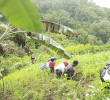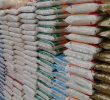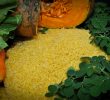“We will use part of the fund to rehabilitate the coconut industry and the welfare of the coconut farmers” — Euclides Forbes, Philippine Coconut Authority undersecretary
By JOHN RIZLE L. SALIGUMBA
Davao Today
NABUNTURAN, Compostela Valley, Philippines – A high government official said that part of the profits from the coco levy fund is “enough” to rehabilitate the coconut industry in the provinces of Compostela Valley and Davao Oriental which were badly hit by typhoon Pablo.
“The dividend of the coco levy fund which is now in the UCPB (United Coconut Planters Bank) is 13 billion pesos. Just 20 percent or 2.6 billion of that is enough to rehabilitate the whole Davao Oriental and Compostela provinces,” said Philippine Coconut Authority Undersecretary Euclides Forbes in a press conference with local government officials here last week.
It can be recalled that in September, the Supreme Court affirmed with finality the 2004 Sandiganbayan ruling which awarded the 24 percent block of sequestered shares in San Miguel Corporation (SMC) to the government. The said fund from the coconut levy was imposed during the martial law years. The 700 million SMC preferred shares of stock is now worth PHP 52.5 billion at PHP 75 per share.
“There is no more judicial obstacle for the President to use the coco levy fund. He need not use the principal,” Forbes said, adding that Aquino has not issued a statement yet on this matter.
However, the official use of the coco levy fund is part of the concern of the Department of Agriculture (DA).
“We will submit (our proposal) to the DA. But, in our roadmap, we will use part of the fund to rehabilitate the coconut industry and the welfare of the coconut farmers,” Forbes said.
Based on Forbes’ estimate, 60 percent of the coco industry production in the two provinces is affected or at least PHP 5 billion. This means that there’s, at most, 10 percent loss of the total income of the coconut industry nationwide.
“The average annual revenue of coco products is two billion dollars, even if production was down by 40 percent,” Forbes said.
Coconut is the number one agricultural product as far as forest income is concerned, according to the PCA.
Forbes shared that the PCA already had a rehabilitation plan for the coconut industry in the country before typhoon Pablo. But he said they would have to modify it to respond to the damages in the affected areas.
For 2013, the PCA has planned to plant 17 million coconut trees with two million trees for Davao Oriental and Compostela Valley. But after Pablo, PCA now plans to expand to 10,000 hectares of coconut trees in the two provinces.
However, Forbes admitted that their program for the coconut farmers also involves inter-cropping, saying “our program is not to rely on coconut alone, otherwise, farmers cannot go higher than the poverty threshold of 25,000 pesos income per annum.”
Part of the PCA’s rehabilitation program, he said, is intercropping and livestock-raising while waiting for the coconuts to grow. Aside from the regular coconut which would take seven years to be productive, PCA is planning to plant dwarf varieties of coconut which would respond to the demand on “emergent products” like virgin coconut oil and coco-sugar.
Coconut farmers’ woes
Toto Morales, 36, a resident of Mikit village in Baganga, Davao Oriental said that the situation of coconut farmers would require “a more comprehensive approach.”
His family had been a tenant of a local landlord for two generations now. His father was the first who worked in the coconut farm 35 years ago when the buying price of copra is not lesser than PHP 30.
The Moraleses were able to yield 3,000-4,000 kilos of copra in their landlord’s 18-hectare land. But the buying price of copra is now only between PHP 12 to PHP 14.
“Our net earnings will only get us 18,000 pesos while we spend 26,000 pesos on labor,” Morales lamented.
They are currently on a 40-60 sharing scheme with their landlord, which means that they get 40 percent of the gross income.
“We are able to get more income from making charcoal out of coconut shells. But it only pays-off for the deficit in labor expenses,” Morales said
They pay PHP 200 per person per day who works for the farm for about one month in order for the coconut harvesting to be finished.
“This is hard work and we understand it because we also do labor for other farmers so we couldn’t lower the per day rate, it would be inhuman,” said Morales.
Before the PCA planned to urge farmers to do inter-cropping, Morales said they have been growing eggplant and bell pepper in a half a hectare land inside the coconut farm.
“I have planted these for nearly a year now and it’s yielding good. It can sustain harsh weather but not a super typhoon like Pablo,” said Morales.
He also already planted nearly a hundred cacao trees and about 400 rubber trees which have not fully grown.
Morales said that the PCA’s plan to plant two million trees in the two provinces “may not be enough” since trees number at about 200-300 trees per hectare if all grew well and mature. In the 18-hectate land which the Moraleses planted with coconut trees, about 4,000-6,000 trees are already damaged.
As of now, their landlord has not acted on what he plans to do with his lot.
For farmers who are trapped in tenancy all their lives, and in the case of Morales, for two generations, the bitter and not better option is to opt to become farm-workers instead.
“I told my father that we should instead work as farm laborers because at least we can earn 200 pesos per day. However, I think nobody would hire us here as all coconuts were already destroyed. If anyone decides to plant again, it will not be until months after,” he said.
According to Dewey Clark, the Officer-in-charge of the Municipal Planning and Development Office in Baganga, about 95 percent of the 36,000 hectares of coconut farms were destroyed.
The nearby town of Cateel reported that 15,000 hectares of coconut farms were also destroyed while 9,000 hectares of coconut farms were destroyed in the town of Boston.
“We have not yet heard of the program of PCA, they have not visited us yet,” said Clark.
“Give it to the farmers”
Meanwhile, peasant organization Kilusang Magbubukid ng Pilipinas in Southern Mindanao demanded that the coco levy fund must be directly distributed — in cash — to the coconut farmers.
“In our computation, coconut farmers would get 16,000 pesos each,” said Pedro Arnado, KMP secretary general. He added that the victims of typhoon Pablo must get the amount first “to help them rebuild their houses and for daily sustenance.”
Arnado also challenged President Noynoy Aquino to attend to the victims of Pablo, including “the dead and their families, those wounded and hospitalized, those whose properties and livelihood were damaged.”
Aquino has declared a state of national calamity four days after Pablo hit Mindanao. This means, Arnado said, that “five percent from the national budget should be used.”
KMP also scored the Aquino government’s treatment of relief operations.
“Aquino should prioritize the small-scale miners and mine workers, the banana workers and the rice and coconut farmers instead of the big mining and logging corporations and the capitalists of the banana industry,” Arnado said. (John Rizle L. Saligumba/davaotoday.com)










